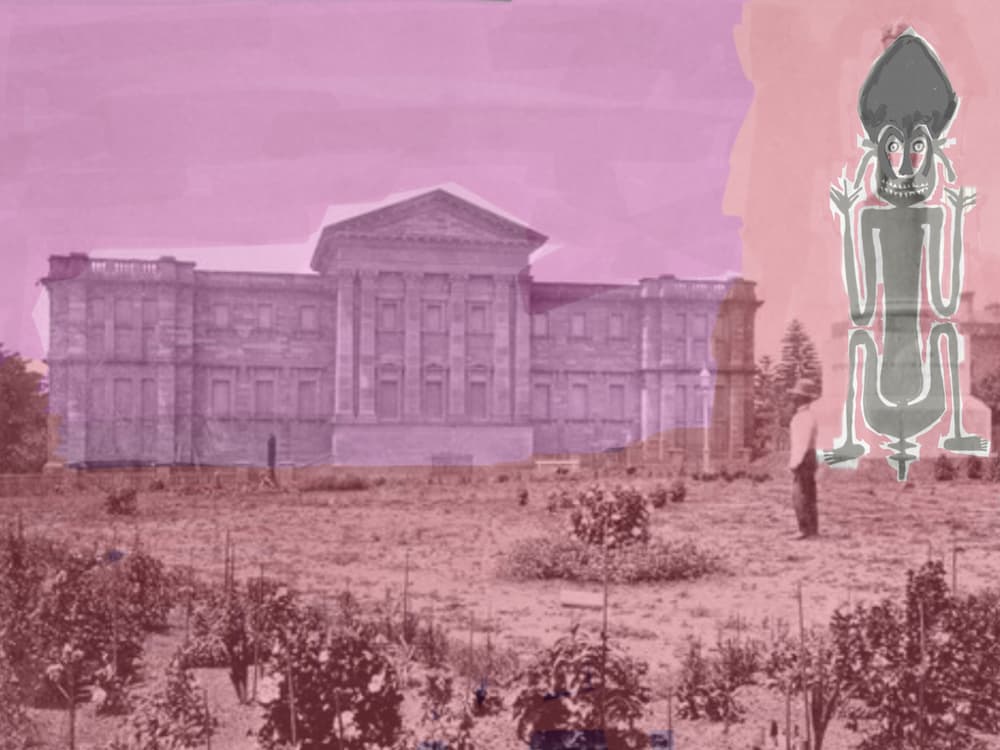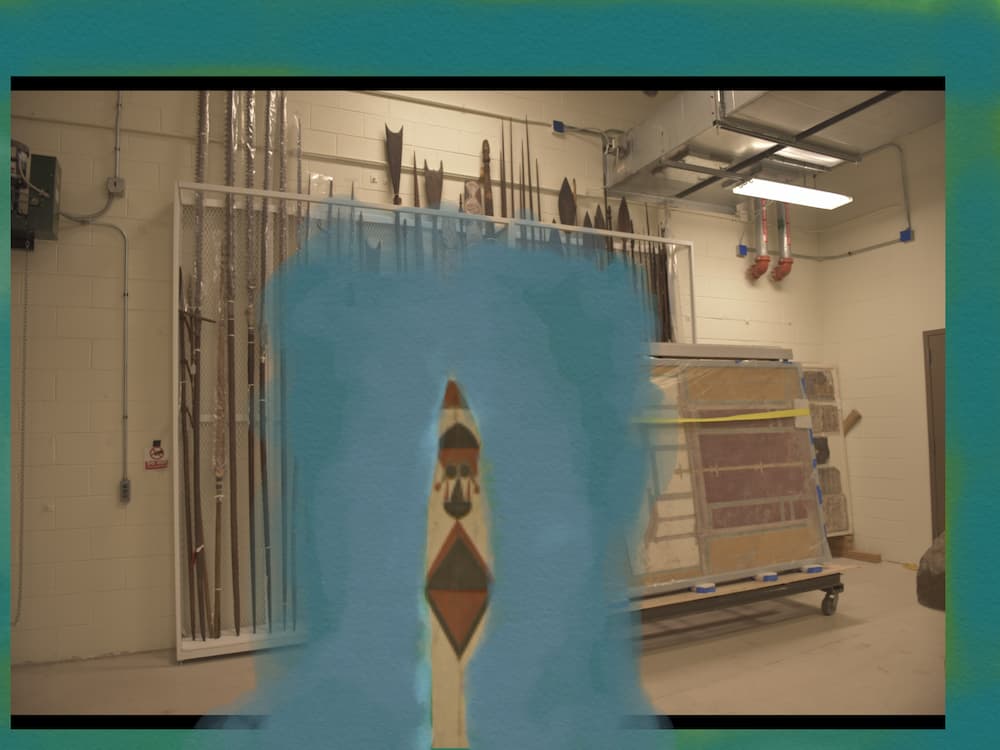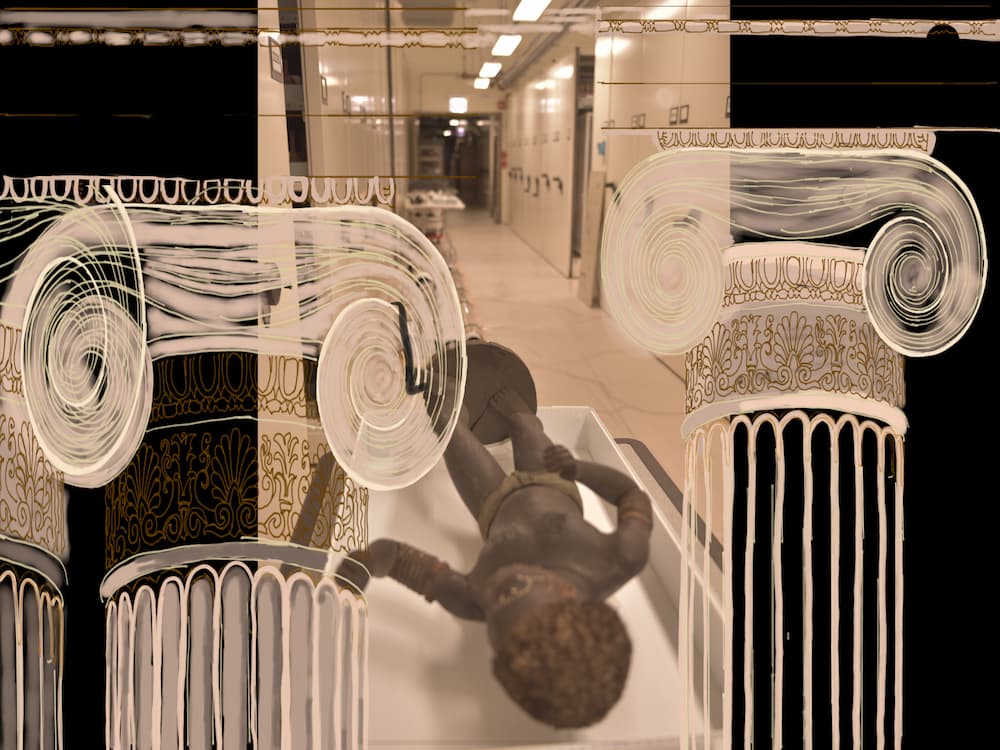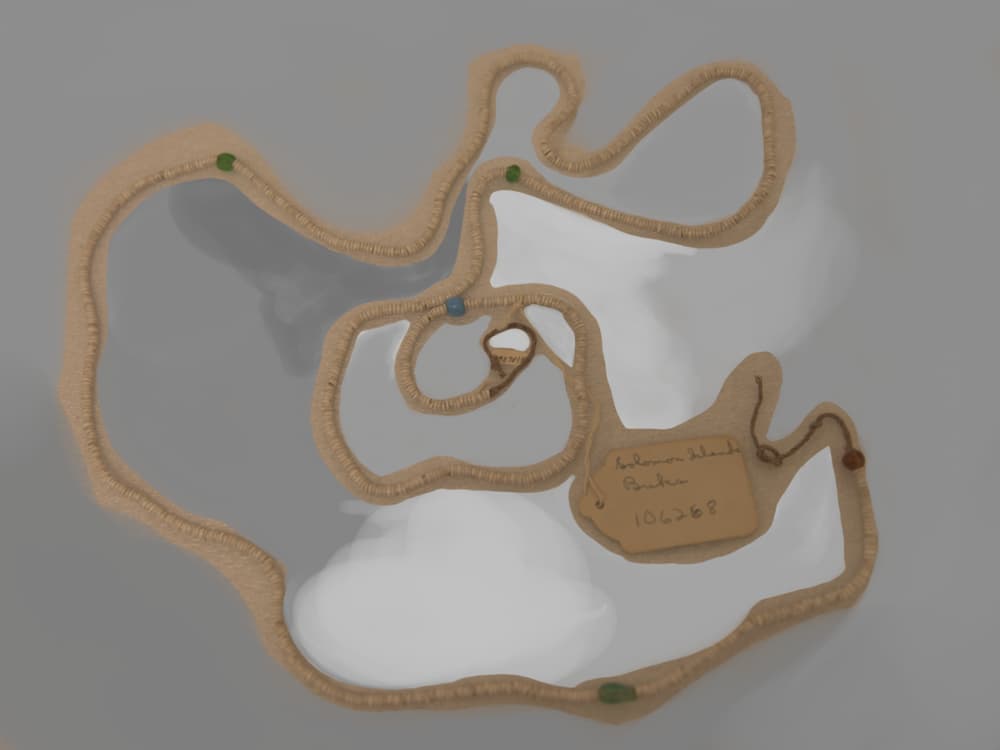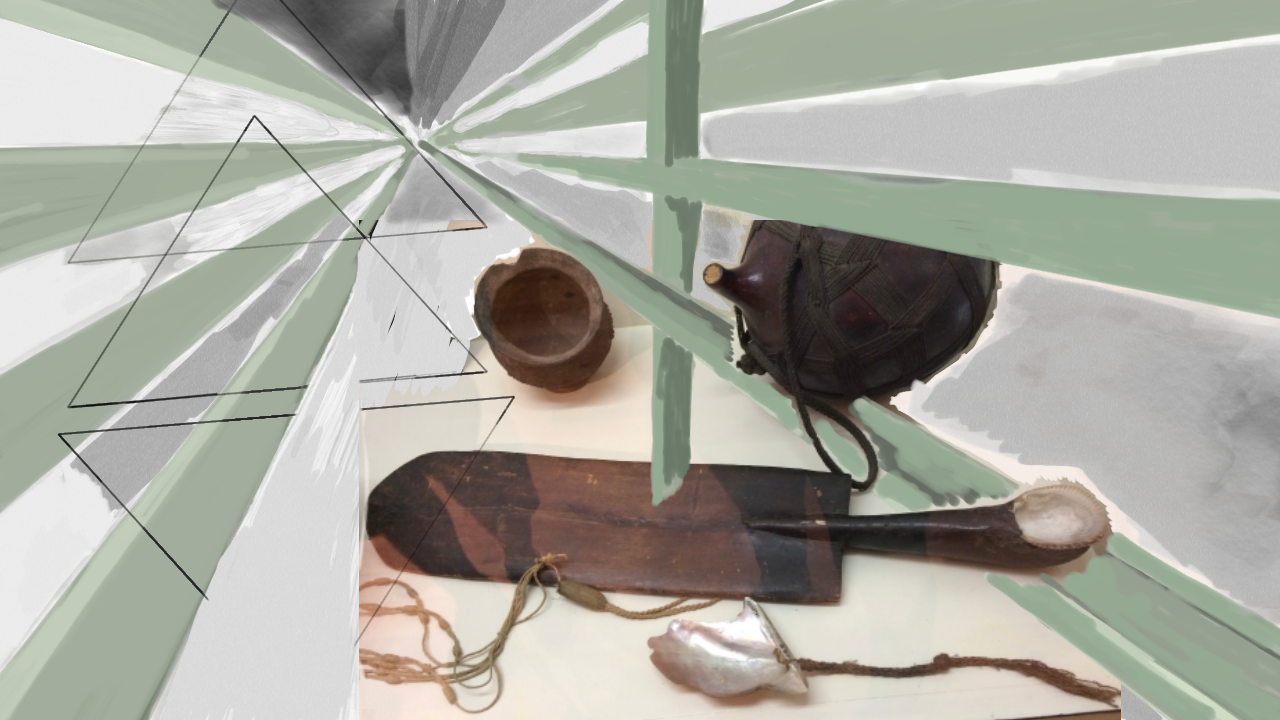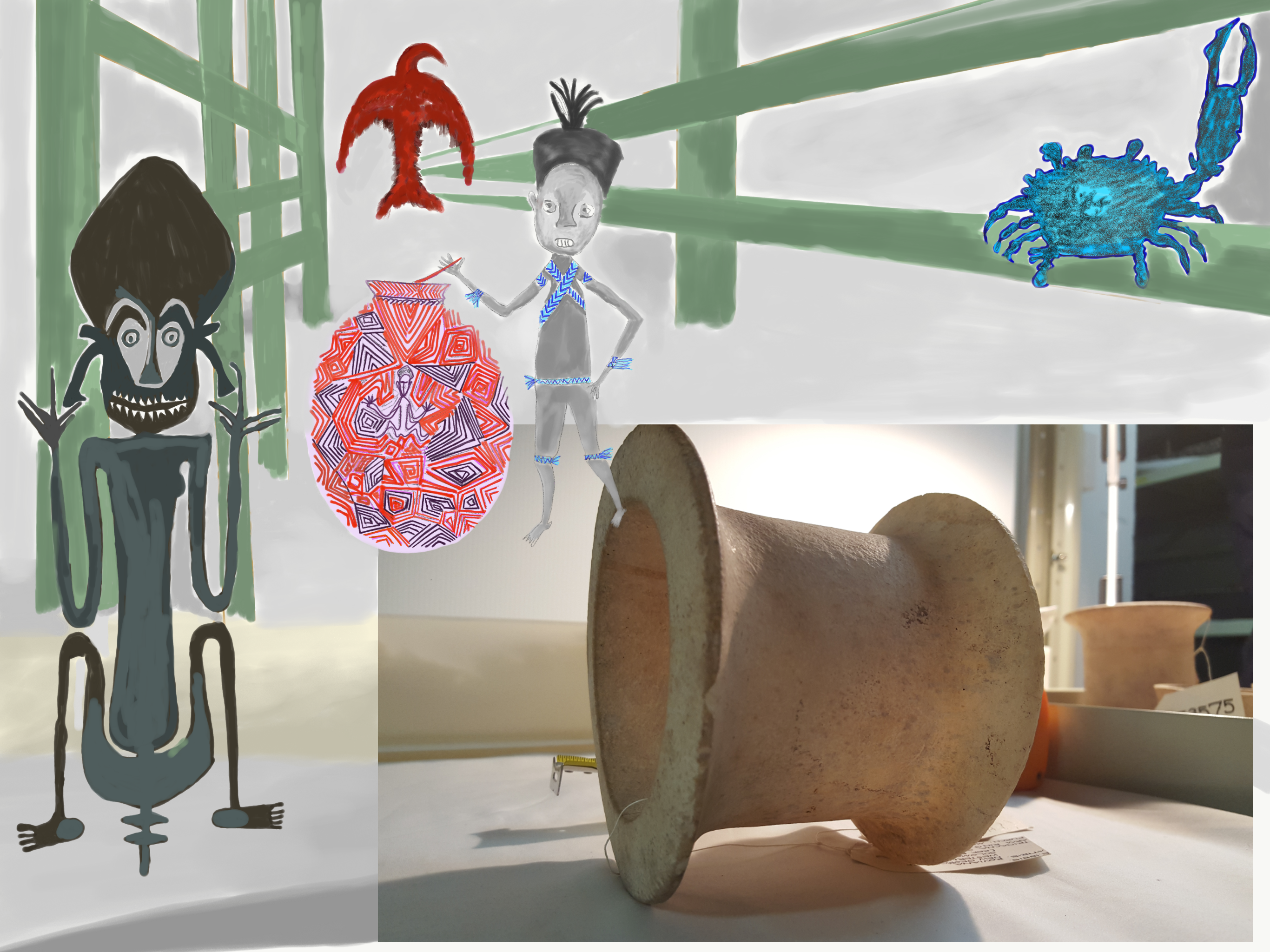Taloi Havini, Useful Arts 2021
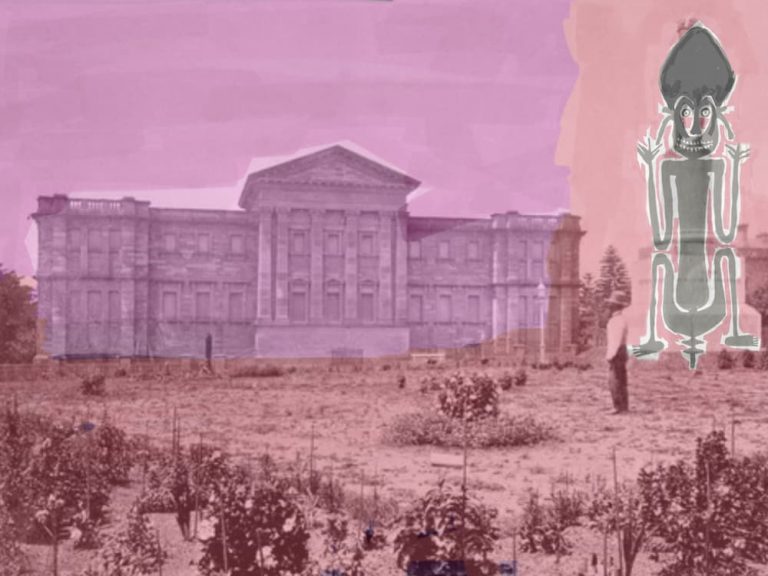

In Taloi Havini’s Useful Arts, dynamic, floating compositions and arrangements of objects, places and designs, combined with hand-rendered digital painting, drawing and erasure, destabilise dominant narratives of place as well as colonising practices of documentation and mapping.
Layered assemblages of images, maps, museums and colonial institutions some recognisable and seemingly half familiar, some indiscernible to all but those with shared cultural knowledge, resist externally imposed categorisation and are richly alive with personal, cultural, historical and political narratives and significance.
Taloi Havini is a descendant of the Nakas clan of the Autonomous Region of Bougainville, Papua New Guinea. Her work is often a personal response to the politics of location, exploring contested sites and histories connected within Oceania and employing photography, sculpture, immersive video and mixed-media installations.
This project takes its name, Useful Arts, from a chapter in an historical anthropological text, Both Sides of Buka Passage: An Ethnographic Study of Social, Sexual and Economic Questions in the North-Western Solomon Islands, published in 1935 and authored by British anthropologist Beatrice Blackwood.
Encompassing two distinct and interrelated elements, Useful Arts comprises a series of composite digital images. Taloi has redrawn and recoloured photographic images, taken by herself, of objects and often unseen museum storerooms of ethnographic collections and repositories around the world. These images reposition and reconstruct these objects and collections through these acts of self-determination.
Taloi views her extensive archive of images of museums as a deeply personal collection with direct links to her cultural heritage and ancestry. Through photography and processes of overwriting images with tribal designs and patterns from shields, high-key colours, untitled maps and the artist’s own image, Taloi reclaims and reanimates static museological arrangements and object displays to suggest the dynamic cultural contexts and people to which the collected, tagged and stored artefacts belong.
The second part of Taloi’s Useful Arts project comprises an installation that replicates a museum storeroom, presented in Buxton Contemporary’s gallery spaces. Within this environment, the artist presents a selection of Kastom (traditional culture) objects from her collection in an act of cultural agency that raises critical questions around notions of ownership, repatriation, the politics of display, the history of classification and the moral imperative for colonial redress.
Taloi Havini
Useful Arts 2021
11 composite digital images
© the artist
Light Source Commission, Buxton Contemporary, The University of Melbourne, 2021
About the artist
Taloi Havini’s artistic and curatorial practice centres on the deconstruction of the politics of location and the transmission of Indigenous knowledge systems. Her work responds to the history and culture of Bougainville, where she was born, and acknowledges her people’s deep connection to land despite years of conflict and civil war. In her research, Havini engages with living cultural practitioners and Oceanian material collections and archives. She often responds to these experiences and sites of investigation with experimental ceramic installations and print, photographic and video works in solo and collaborative projects. She is actively involved in cultural heritage projects, exhibitions, research and community development in Melanesia and Australia.
Taloi Havini’s artwork is held in major public and private collections and has been exhibited extensively nationally and internationally, including at the Sharjah Art Foundation, UAE; Art Gallery of New South Wales, Sydney; Queensland Art Gallery | Gallery of Modern Art, Brisbane; National Gallery of Victoria, Melbourne; Honolulu Biennial, Palais de Tokyo, Paris, 3rd Aichi Triennial, Nagoya and KADIST, San Francisco. Taloi holds a Bachelor of Arts (Honours) from the Canberra School of Art, Australian National University.

